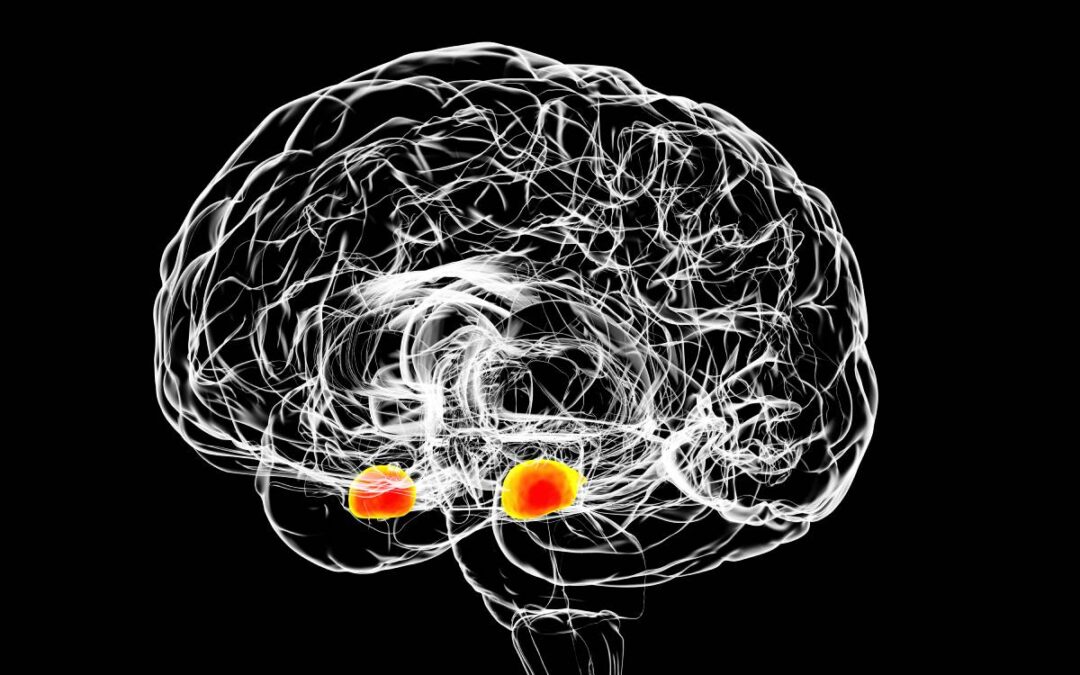One of the core features of “going under” is amnesia for the anesthetized period. Research has shown that anesthetics cause anterograde amnesia in humans but retrograde amnesia in rodents [1-6]. Animal models of anesthesia-induced amnesia generally employ both operant and Pavlovian (classical) conditioning paradigms to operationalize memory performance [7].
Conventional views on the causes of this amnesia theorize that anesthesia modulates memory by targeting the hippocampus [8]. However, this view may be far too simplistic, as growing research points out the hippocampus does not work alone to create the construct of memory. The basolateral amygdala (BLA), traditionally thought to only be crucial in emotion, is one neural structure that has been more recently linked to memory as well [9]. Especially for short-term memories, the BLA plays a significant role in modulating which memories the hippocampus can consolidate, creating a neurological filter where only the most important and emotionally significant memories are consolidated into long-term memory [10]. Long-term memory is supported by the process of synaptic plasticity, where synapses are physically changed to allow for easier communication between neurons that routinely “fire together” (such as neurons that call forth or represent a long-term memory). Changing neuronal structure requires synthesis of cellular proteins, which requires activation of the genes related to memory formation [10].
Ren et al. measured the mRNA levels of activity-regulated cytoskeletal (Arc)-associated protein, a memory-related effector gene, when rats underwent memory training. They found Arc mRNA levels increased during training, even when propofol was administered [11]. However, there was still an observable behavioral deficit in anesthetized rats on long-term memory tasks as well as a hippocampal reduction in Arc protein. This suggests the amnesic effect of anesthesia does not block transcription but rather translation of proteins [8]. The researchers further hypothesized that if propofol acts on the BLA as a gamma-aminobutyric acid (GABA) agonist, introducing a GABA antagonist into the BLA would counteract the effects of the anesthetic and restore memory function (both behaviorally and chemically through the restitution of Arc protein levels). Their results confirmed this, suggesting propofol induces amnesia for aversive memories because of its disruptive effects on GABA in the BLA [11]. Suppression of hippocampal Arc protein but not Arc mRNA during anesthetic administration is noted with other forms of anesthetics, such as sevoflurane and desflurane [11].
General anesthetics are thought to work on GABA receptors by attaching to specific amino acids within the composition of the receptors themselves, thus prolonging the ion-channel opening, creating the negative potential which extends the inhibitory qualities of GABA signaling [12]. Electrophysiological recordings showed amnesia-inducing anesthetics such as propofol, etomidate and isoflurane increased the current produced by GABAΑ receptors by as much as 35-fold. Genetic removal of the alpha-5 subunit on these GABAΑ receptors reversed the amnesic effect of common general anesthetic agents [12].
In the 21st century, anesthesia has become incredibly safe for general use, but “going under” is not without its risks. The research on GABA-mediated pathways and the importance of the BLA in the neuroscientific field presents preliminary evidence on the mechanisms behind anesthesia-induced amnesia. Nonetheless, further research is needed to define reversal procedures and other clinical implications.
References
- Parent MB, McGaugh JL. Posttraining infusions of lidocaine into the amygdala basolateral complex impairs retention of inhibitory avoidance training. Brain Res 1994; 661: 97–103 https://doi.org/10.1016/0006-8993(94)91186-X
- Introini-Collison IB, Castellani C, McGaugh JL. Interaction of GABAergic and β-noradrenergic drugs in the regulation of memory storage. Behav Neural Biol 1994; 61: 150–5 https://doi.org/10.1016/S0163-1047(05)80068-8
- O’Gorman DA, O’Connell AW, Murphy KJ, Moriarty DC, Shiotani T, Regan CM. Nefiracetam prevents propofol-induced anterograde and retrograde amnesia in the rodent without compromising quality anesthesia. Anesthesiology 1998; 89: 699–706 https://doi.org/10.1097/00000542-199809000-00021
- Pandit SK. Anterograde, not retrograde, amnesia after thiopental. Anesthesiology 1992; 77: 214–5 https://doi.org/10.1097/00000542-199207000-00036
- Twersky RS, Hartuny J, Berger BJ, McClain J, Beaton C. Midazolam enhances anterograde but not retrograde amnesia in pediatric patients. Anesthesiology 1993; 78: 51–5. PMID: 8424571.
- Rich JB, Yaster M, Brandt J: Anterograde and retrograde memory in children anesthetized with propofol. J Clin Exp Neuropsychol 1999; 21: 535–46 https://doi.org/10.1076/jcen.21.4.535.888
- Dutton RC, Maurer AJ, Sonner JM, Fanselow MS, Laster MJ, Eger EI. Isoflurane causes anterograde but not retrograde amnesia for Pavlovian fear conditioning. The Journal of the American Society of Anesthesiologists 2002; 96(5): 1223-1229. https://doi.org/10.1097/00000542-200205000-00027
- Alkire MT, Guzowski JF. Hypothesis: Suppression of Memory Protein Formation Underlies Anesthetic-induced Amnesia. Anesthesiology 2008; 109:768–770 https://doi.org/10.1097/ALN.0b013e31818aa6f2
- Alkire MT, Nathan SV. Does the Amygdala Mediate Anesthetic-induced Amnesia?. Basolateral Amygdala Lesions Block Sevoflurane-induced Amnesia. Anesthesiology 2005; 102:754–760 doi: https://doi.org/10.1097/00000542-200504000-00010
- McGaugh JL. The amygdala modulates the consolidation of memories of emotionally arousing experiences. Annu Rev Neurosci 2004; 27:1–28 https://www.annualreviews.org/doi/abs/10.1146/annurev.neuro.27.070203.144157
- Ren Y, Zhang F-J, Xue Q-S, Zhao X, Yu B-W. Bilateral inhibition of γ-aminobutyric acid type A receptor function within the basolateral amygdala blocked propofol-induced amnesia and activity-regulated cytoskeletal protein expression inhibition in the hippocampus. Anesthesiology 2008; 109:775–81 https://doi.org/10.1097/ALN.0b013e31818a37c4
- Orser, BA. Lifting the fog around anesthesia. Scientific American 2007; 296(6): 54-61. http://www.jstor.org/stable/26069307





Recent Comments